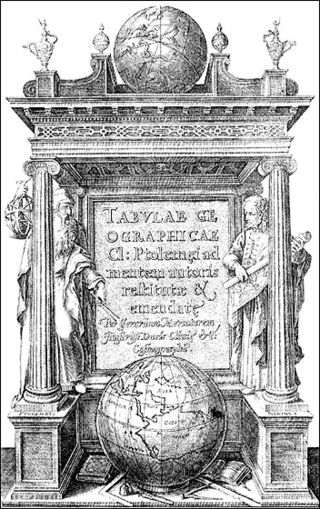Top Qs
Timeline
Chat
Perspective
2nd century in Lebanon
From Wikipedia, the free encyclopedia
Remove ads
This article lists historical events that occurred between 101–200 in modern-day Lebanon or regarding its people.
Administration
Summarize
Perspective

Roman emperor Hadrian (reigned 117–138) is said to have considered a division of the overly large province of Syria in 123–124 AD, but it was not until shortly after c. 194 AD that Septimius Severus (r. 193–211) actually undertook this, dividing the province into Syria Coele in the north and Phoenice in the south.[1] The province was much larger than the area traditionally called Phoenicia: for example, cities like Emesa[a] and Palmyra[b] and the base of the Legio III Gallica[c] in Raphanaea[d] were now subject to governor in Tyre. Veterans of this military unit were settled in Tyre, which also received the rank of colonia.[2]
By creating the province of Phoenicia, Septimius Severus revived the Phoenician identity. His restoration of the ancient regional name seems to come from a deep pride in his own origin from the regions of Dido in Africa and his wife’s roots in Phoenicia.[3]
War of Succession

After the death of the 2nd century Roman emperor Commodus, a civil war erupted, in which Berytus, and Sidon supported Pescennius Niger. While the city of Tyre supported Septimius Severus, which led Niger to send Mauri[e] javelin men and archers to sack the city.[4] However, Niger lost the civil war, and Septimius Severus decided to show his gratitude for Tyre's support by making it the capital of Phoenice. Berytus was permitted to maintain its status as a Roman colony but lost the territory of Heliopolis, which was established as a separate colony. Ulpian, a native of Tyre, states that the grant of colonial status to Heliopolis resulted from this civil war.[5]
Propraetorial Imperial Legates of Phoenicia
The early governors of Phoenice from the time of Septimius Severus are known mainly by inscriptions. The governors resided in Tyre.[6]
Remove ads
Events
100s
- Eudokia of Baalbek is beheaded in 1 March, 107 AD.[7]
110s
- The 115 Antioch earthquake in which Beirut suffers significant damage, occurs on 13 December 115 AD.[8]
130s
- Roman Emperor Hadrian visits the city of Tyre in 130/131.[9]
150s
- Phoenician-born Pope Anicetus is elected as bishop of Rome c. 157 AD.[10]
190s
- Roman emperor Commodus dies on 31 December 192,[11] leading to a war of succession, in which each Lebanese city took side of either Septimius Severus or Pescennius Niger.
- In AD 193, Septimius Severus grants Baalbek ius Italicum rights.[12]
- Niger is defeated and beheaded in 194, ending the war of succession.[13]
- The Roman province of Phoenice is created c. 194 AD.
- Tyre becomes the capital of Phoenice, 198 AD.[14]
Remove ads
Culture
Sports
Athletic competitions following the classical model persisted in the region during the second century AD, taking place in public venues such as gymnasiums. An athlete from Aphrodisias in Caria, in 165 AD, recorded his victories, listing events in various Phoenician cities: the men’s pankration in Berytus, the men’s pankration in Tyre, and the men’s pankration in Hieropolis.[15]
Wildlife conservation
The first attempt to conserve the Lebanese cedar was made during the 2nd century by the Roman emperor Hadrian; he created an imperial forest and ordered it marked by inscribed boundary stones, two of which are in the museum of the American University of Beirut.[16] Material finds of this early type of wildlife conservation is provided by 200 inscriptions engraved on rocks all over the northern part of Mount Lebanon.[17]
Architecture
Based on literary evidence, by the early second century AD, Berytus featured various public structures, including halls, porticoes, temples, marketplaces, a theater, an amphitheater, and baths. The buildings and streets were decorated with statues and sculptures.[15]
- Temple of Bacchus, Baalbek.
- Triumphal arch of Tyre.
- The Tyre Hippodrome.
- The Exedra around the Great Court, Roman Heliopolis.
- 2nd century CE Roman temple, Yanouh.[18]
- Temple of Bacchus, possibly during the reign of Roman Emperor Antoninus Pius (r. AD 138-161).[19]
- Triumphal arch at El-Buss.[9]
- Numerous 2nd century small temples and other sanctuaries in the vicinity of the temple district of Heliopolis, today's Baalbek, on the edge of the Bekaa.[20]
- Tyre Hippodrome.[21]
- the Great Court Complex of the temple of Jupiter, with its porticoes, exedrae, altars and basins.[22]
Remove ads
People
100s

- Lebanese Roman grammarian and critic Marcus Valerius Probus, dies in 105 AD.[23]
110s
- Adrianus of Tyre, a sophist of ancient Athens who flourished under the emperors Marcus Aurelius and Commodus is born in 113 AD.[24]
130s

- Marinus of Tyre, a Greek geographer, cartographer and mathematician, who founded mathematical geography and provided the underpinnings of Claudius Ptolemy's influential Geography, dies in 130 AD.[25][26]
140s
- Lebanese antiquarian writer of grammatical, lexical and historical works and writer of Phoenician history Philo of Byblos dies in 141 AD.[27]
170s
190s
Remove ads
Notes
References
Sources
Wikiwand - on
Seamless Wikipedia browsing. On steroids.
Remove ads











